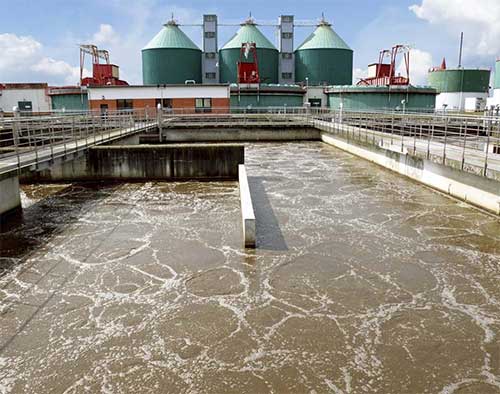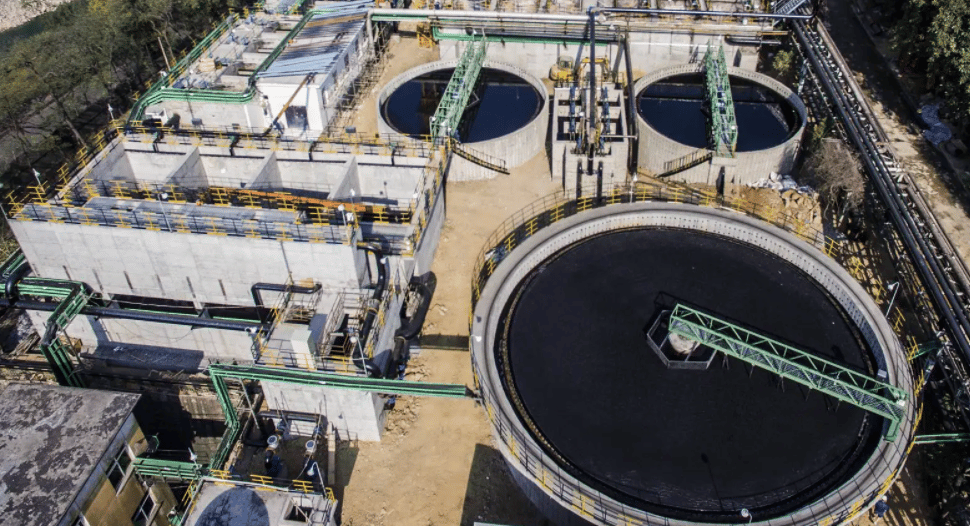Difficulties and Solutions in Hazardous Waste Water Therapy
The treatment of industrial wastewater provides a complex array of challenges, ranging from rigid governing compliance to the complexities of expense administration and technical constraints. The variability in waste composition even more complicates the efficiency of typical therapy techniques, usually resulting in escalated operational expenditures. Nonetheless, emerging services such as sophisticated oxidation procedures and ingenious funding designs reveal pledge in resolving these concerns. As industries grapple with the need for lasting techniques, the inquiry stays: what methods will eventually result in a balance in between conformity, cost-efficiency, and environmental responsibility?
Regulatory Conformity Difficulties
How can commercial facilities browse the complicated landscape of regulatory conformity in wastewater treatment? The governing framework controling wastewater administration is multifaceted, usually varying by territory and sort of sector. Facilities needs to follow government, state, and regional laws that dictate effluent top quality requirements, discharge restrictions, and tracking needs. Failure to abide can result in serious penalties, including penalties and operational closures.
To efficiently handle these conformity challenges, facilities must implement robust tracking and reporting systems that make certain real-time data collection and analysis. Routine audits and threat assessments can identify prospective conformity voids, permitting proactive modifications in therapy procedures. Staff member training programs focusing on regulatory understanding and finest techniques are vital to foster a society of compliance within the organization.
Furthermore, involving with regulatory companies can offer useful insights and clarify unclear guidelines. Facilities might additionally benefit from speaking with ecological experts who focus on wastewater treatment conformity, making sure that they stay informed of evolving policies. By taking on these techniques, industrial facilities can not only meet compliance demands but additionally improve their functional efficiency and environmental stewardship.
Price and Financial Obstacles
Navigating governing compliance in wastewater treatment often offers considerable financial difficulties for industrial facilities. The expenses connected with executing required treatment modern technologies, preserving conformity with stringent guidelines, and taking care of functional expenditures can be discouraging. Several organizations encounter high first capital investment for the construction or updating of wastewater therapy plants, which might stress budgets, particularly for tiny and medium-sized ventures.
Additionally, ongoing functional costs, including upkeep, labor, and chemical inputs, add to the financial concern. The changability of fluctuating power rates and the possible demand for extra financial investments to meet evolving policies aggravate these financial stress. Oftentimes, the lack of economic incentives or support from federal government bodies makes it a lot more difficult for companies to warrant financial investments in sophisticated treatment systems.
In addition, the economic practicality of wastewater treatment services is often examined, especially for industries with tight profit margins. Consequently, it is essential for commercial facilities to check out cost-efficient strategies, such as embracing ingenious financing choices, taking part in collaborations, and leveraging arising innovations that can assist alleviate these financial barriers while guaranteeing compliance with ecological standards.

Technological Limitations
Numerous technical restrictions impede the efficiency of commercial wastewater therapy procedures. One substantial obstacle is the inadequacy of existing treatment modern technologies to attend to complex contaminants. Lots of traditional techniques, such as triggered sludge and chemical precipitation, have problem with the removal of arising pollutants, including microplastics and pharmaceuticals. This restriction frequently results in the discharge of inadequately dealt with water, which can have destructive ecological effects.
In addition, the scalability of therapy modern technologies presents a challenge. While some sophisticated techniques, like membrane layer filtering or innovative oxidation, reveal pledge in controlled environments, their application on a find out here larger range can be much too costly and technically tough. Maintenance and functional complexities better make complex the fostering of these systems, especially for smaller markets with limited technological competence.
The combination of real-time surveillance technologies additionally remains inadequate in lots of therapy centers. Without effective surveillance systems, drivers can not adequately examine treatment effectiveness or detect prospective failings, leading to irregular effluent top quality. Attending to these technological restrictions via research and growth, alongside investment in cutting-edge options, is vital for boosting the effectiveness of commercial wastewater treatment and making certain regulatory conformity.
Variability in Waste Make-up
In websites the realm of commercial wastewater therapy, the variability in waste structure offers an awesome obstacle. Industries produce wastewater with diverse attributes, influenced by elements such as production procedures, resources, and operational methods. This heterogeneity makes complex the treatment procedure, as traditional systems usually struggle to effectively address the vast array of pollutants present.
For circumstances, wastewater from food processing may contain high degrees of raw material, while effluents from chemical production could include heavy steels and harmful materials. This variance necessitates versatile treatment methods to guarantee compliance with ecological policies and shield public health and wellness. Additionally, changes in waste make-up can take place with time, affected by changes in manufacturing timetables, upkeep activities, or the introduction of brand-new items.

Innovative Therapy Solutions
Ingenious therapy solutions are necessary for dealing with the complexities of commercial wastewater administration. Typical techniques frequently drop short in effectively getting rid of a wide variety of impurities, specifically in centers with diverse effluent streams. Recent innovations concentrate on integrating cutting-edge innovations to boost therapy performance and sustainability.
One promising approach is using sophisticated oxidation procedures (AOPs), which leverage powerful oxidants to degrade natural contaminants. AOPs, including photocatalysis and ozonation, can considerably minimize poisonous materials and boost effluent quality. Additionally, membrane bioreactor (MBR) innovation has actually gotten grip, incorporating biological therapy with membrane filtration, causing high-quality effluent and decreased footprint.
One more cutting-edge remedy is the execution of source recuperation systems. Strategies like anaerobic food digestion not just treat wastewater but likewise produce biogas, which can be taken advantage of as a renewable resource source. The fostering of synthetic knowledge and device learning versions can enhance treatment processes by anticipating variations in wastewater make-up, consequently boosting operational performance.
These innovative remedies not only address governing conformity but also advertise environmental sustainability, leading the means for a more durable and reliable industrial ecological community.
Final Thought
In conclusion, attending to the difficulties of commercial wastewater therapy needs a diverse strategy that incorporates regulative conformity, price administration, and technological improvements. Cutting-edge solutions, such as advanced oxidation processes and membrane layer bioreactor modern technology, deal paths to improve treatment performance. Real-time surveillance systems and joint interaction with governing companies can promote sustainable techniques while reducing economic stress. A dedication to continuous renovation in therapy techniques will inevitably add to the reliable administration of commercial wastewater and environmental management.
The therapy of industrial wastewater presents click this site a diverse range of difficulties, ranging from rigid governing compliance to the intricacies of expense administration and technical limitations. Industrial Waste Water Treatment.Browsing governing compliance in wastewater treatment commonly offers substantial financial challenges for commercial facilities. Resolving these technical restrictions via research and advancement, alongside investment in ingenious services, is critical for enhancing the efficacy of industrial wastewater treatment and ensuring regulatory compliance
Wastewater therapy facilities must spend in robust surveillance systems and adaptable treatment innovations capable of fitting varying influent attributes.In final thought, addressing the difficulties of industrial wastewater therapy needs a complex approach that incorporates governing compliance, cost management, and technical developments.